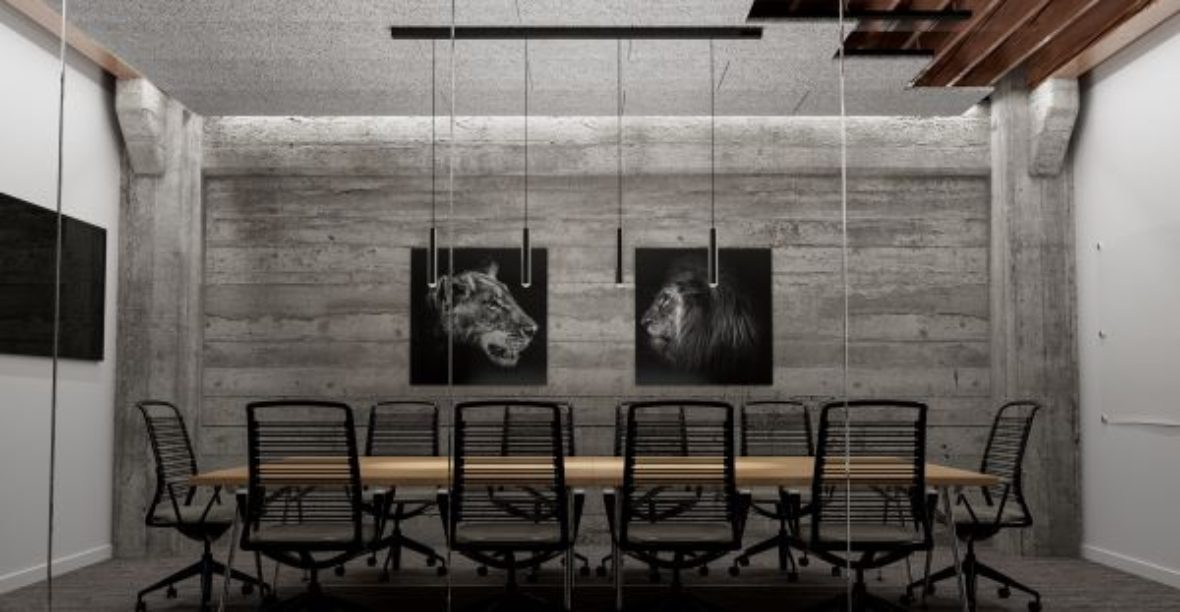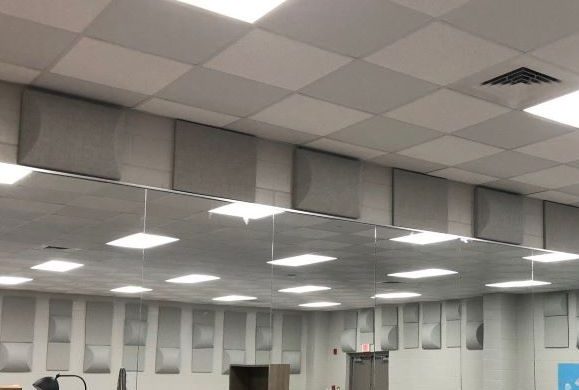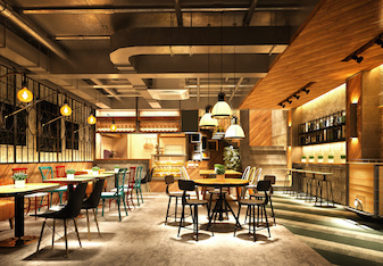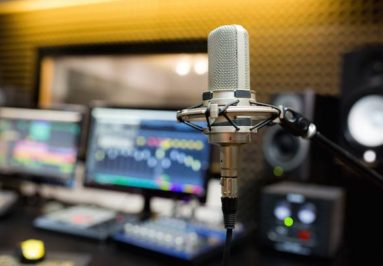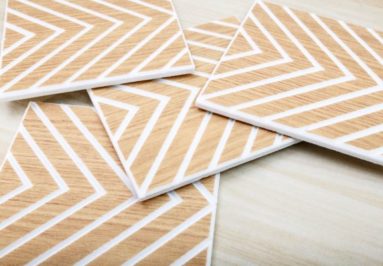When to Use Acoustic Ceiling Clouds vs Other Acoustic Ceiling Panels
Acoustic Ceiling clouds are just like acoustic wall panels because they’re made from the same materials, but they’re mounted in different ways. Ceiling clouds are hung down from the ceiling using airline wire, while wall panels are hung with either impaling clips or z-clips.
Ceiling clouds are typically used where wall panels cannot be used, or they’re used in addition to wall panels in especially echo-y spaces. They help more with echo absorption since both sides of the panel are available to absorb sound. Ceiling clouds are also popular in areas where wall panels would otherwise get dirty, which is a common occurrence in restaurants.
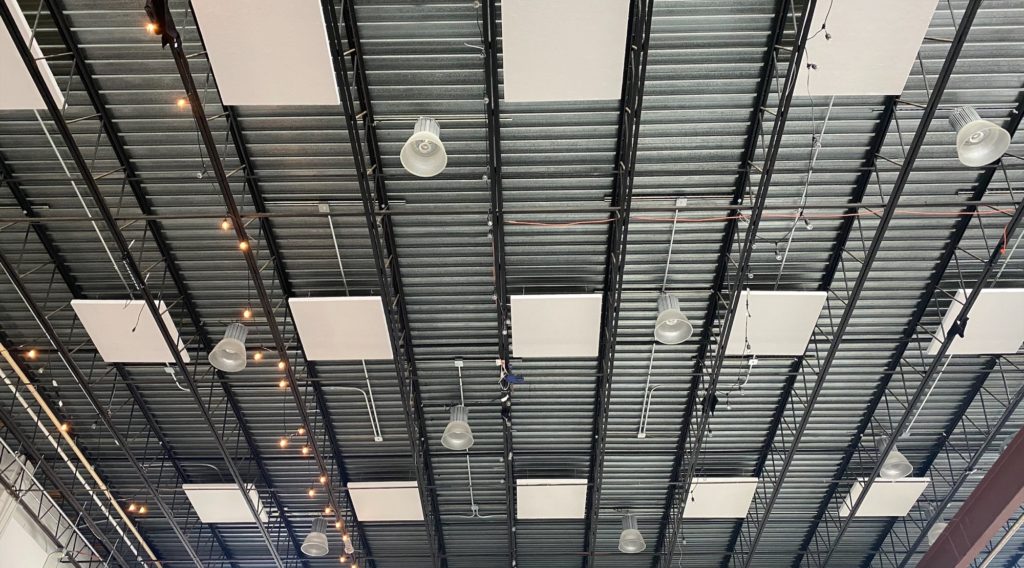
This also keeps them out of view from anyone, such as an owner, who may not want any acoustic treatment to actually be visible. For example, if someone has an exposed black metal ceiling, they usually opt for black ceiling clouds to keep people from noticing them. However, if an owner does want to ceiling clouds to be noticed, they can select and accent color form our wide range of acoustically transparent fabric colors.
Similar to acoustic ceiling clouds, direct attach ceiling mounted panels are used when there’s not enough wall space available for sufficient sound absorption. Unlike clouds, there’s no air gap between the dire-attach panel and the ceiling, so while still very effective, they don’t absorb as much sound as the clouds.
Ceiling Cloud Hanging Hardware
Cloud ceiling panels and direct attached ceiling panels both use a different form of Rotofast anchors to hang. In both cases, the Rotofast anchor is screwed directly into the exposed fiberglass on the back of the panel. For ceiling clouds, the anchor protrudes and has a eyelet on the end, and a cable is used to connect the anchor to and eye lag bolt that is drilled into the ceiling.
For direct attached ceiling panels, the anchor is screwed into the back of the panel until it sits flush with the fiberglass. It is then snapped onto the corresponding hardware that has been properly placed on the ceiling, allowing for the panel to directly attach to the ceiling without an air gap.
More Acoustic Ceiling Panel Options
While ceiling clouds are the most common acoustic ceiling panel option on the market, there are other options including (but not limited to):
- Puck Mounted Ceiling Panels
- Acoustic Ceiling Baffles
Puck mounted panels are another form of direct attach ceiling panels, however they’re mounted with a washer and screw directly through the face of the panel. These are a more cost effective alternative to other ceiling panels since they’re typically made with a less dense fiberglass core and wrapped in PVC rather than fabric. These ceiling panels are ideal for use in gyms, cafeterias, or any other area they could still experience some high abuse while hung up high. Mounting them through the face makes the hanging method more secure, and PVC wrapping allows for easy cleaning.
Ceiling baffles, like clouds, hang down from the ceiling, but they hang perpendicular to the floor. These are most commonly used in gymnasiums, office lobbies, and any other high ceiling spaces requiring echo absorption while keeping the aesthetics of the space. Baffles can be made using a fiberglass core if significant echo reduction is needed, otherwise they’re commonly made of dyed, recycled polyester, which still absorbs sound, but looks much better visually.
When Should You Use Acoustic Panels?
No matter if you need sound absorbing panels on your ceiling, walls or both, when a space has too much echo, this is when you should install acoustic panels. While people mostly install panels in churches, restaurants, clubhouses, offices, schools and more, they can be used in your home.
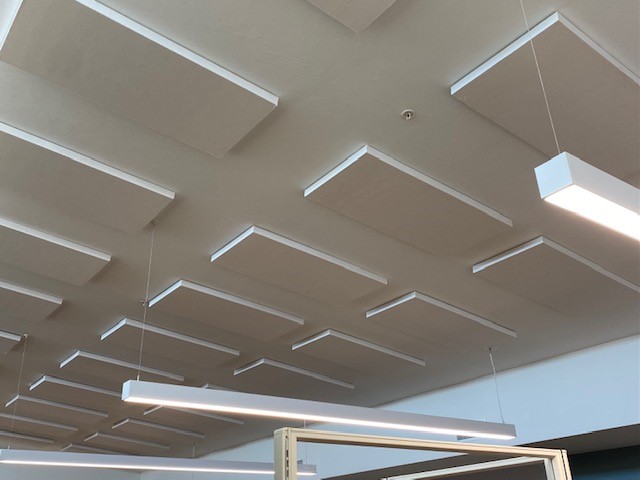
When using acoustic panels in a house, most people will need them if they have an in home recording studio, or if there is simply too much echo in their home. Most of the time, echo in a house can be fixed with plush furniture, area rugs and heavy curtains, but if the room is especially large with hard surfaces (drywall, marble floors, etc), acoustic panels will probably be necessary.
Conclusion: When to Use Acoustic Cloud Panels & Other Acoustic Panels
In summary, you can use acoustic ceiling clouds in spaces that may not have sufficient wall space for enough acoustic wall panels to significantly reduce the echo. This is common in more industrial style spaces that have corrugated metal ceilings, such as restaurants, modern offices and gymnasiums.

